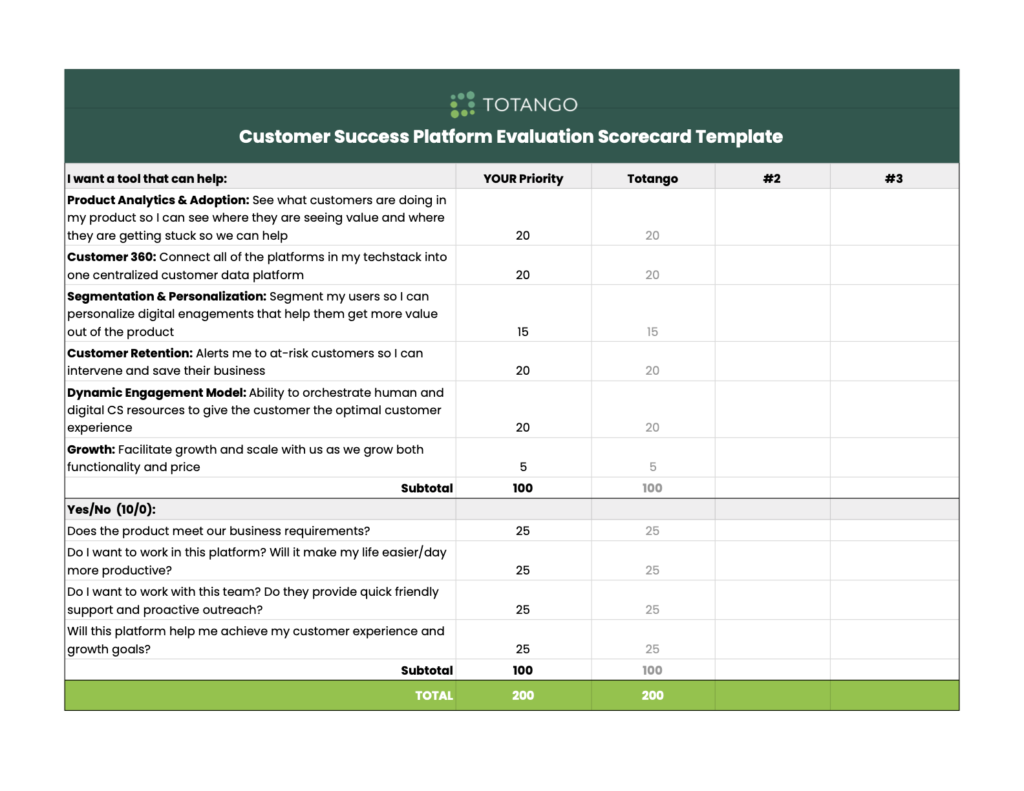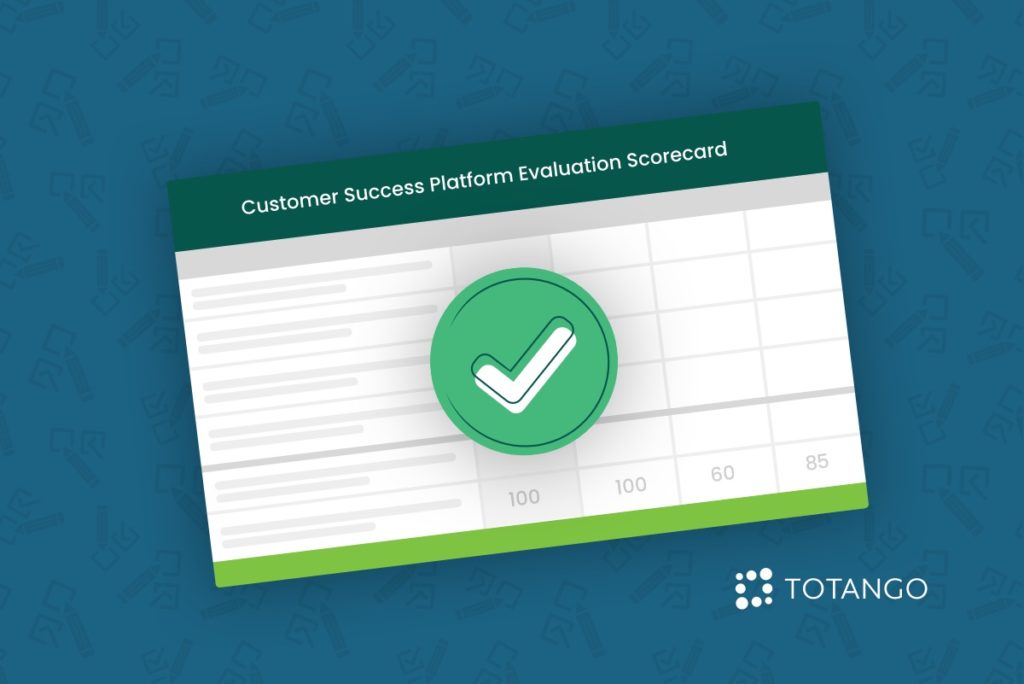If you’ve purchased a home in recent years (or if you’re just someone who enjoys real estate “window shopping”), it’s likely you’ve used a tool like Zillow or Trulia to help you in your house hunt. These sites allow you to narrow down your search by categories like price, location, home type, number of bedrooms and bathrooms, etc. Since the purchase of a home is such a major decision, it’s useful to have a tool to help you sift through the available options and narrow down your search to just what’s really important to you.
Choosing a Customer Success platform for your business is also a major decision and one that should not be taken lightly. There are plenty of options available on the market, but how do you decide which one to choose and which features are the most vital for your company? At Totango, we understand the importance of this decision, so we built a Customer Success Platform Evaluation Scorecard to provide you with a customizable template to help you narrow down your search and evaluate platforms against one another based on the factors that are most important to your specific business requirements. For tips on futureproofing your decision check out the New Trends in CS for 2021.
How to Use the Customer Success Platform Evaluation Scorecard Template
The top half of this template is designed to help you evaluate different platforms based on how important certain factors are to you, whether or not the platforms offer these features, and how well they perform in each category. We chose six factors to evaluate, including:
- Product Analytics and Adoption
- Customer 360
- Segmentation and Personalization
- Customer Retention
- Customer Journey Orchestration
- Growth
In our experience, we’ve found that these six features are crucial for a business to have in a CS platform in order to successfully manage and grow a CS program. The template allows you to choose which of these are the most important to you and weigh them based on level of importance. For instance, if it’s important for you to be alerted to at-risk customers so you can intervene proactively and save that business, then you would rate Customer Retention at a 20. And if you’re less concerned about facilitating growth and scale, then you would rate Growth at a 5. The six categories should all add up to a score of 100. Once you’ve determined the importance of each factor and added weight to them, then you would start researching the various platforms you’ve chosen and scoring them based on how well they perform in each of these categories.
The bottom half of the scorecard is all about you and how well these platforms will work for you and your company. There are four questions for you to answer, including:
- Does the product meet our business requirements?
- Do I want to work in this platform? Will it make my life easier and more productive?
- Do I want to work with this team? Do they provide quick, friendly support and proactive outreach?
- Will this platform help me achieve my customer experience and growth goals?
These are four very important questions to ask when taking on any new product or service. If you’re going to make a significant investment of money and/or time, you need to make sure it’s for a product that will actually meet your business requirements, help you reach your goals, and that you and your team will actually use and enjoy it. Just as on the top half of the card, you should start by prioritizing which of these questions is most important to you, or if they are all equally important, then rate each of them at 25 points. Next, based on your research, give each platform a score depending on how well you feel they meet these requirements.
Once you’ve completed the scorecard, compare the total scores of each platform. The highest scoring platform is your winner and you can feel confident that this tool will meet your specific needs.
Preventing Analysis Paralysis
Analysis paralysis happens when you overanalyze and overthink a situation or purchase to the point where you become so overwhelmed that you are actually “paralyzed” and can’t decide on a solution or course of action. If you have too many options or too many qualifications when choosing a CS platform, you may become overwhelmed and experience analysis paralysis – and perhaps even give up on the entire process (bad idea!). To prevent this from happening, we designed the CS Platform Evaluation Scorecard to feature only 10 qualifications and to compare three different platform options.
We recommend narrowing your qualifications to 10 or fewer and only looking at 3-5 platforms at a maximum because it will help keep you focused on just those things that are most important and will also save time when you start your research. Speaking of research, it’s important that you are gathering your research from trusted, unbiased sources. We recommend peer-to-peer business software review sites like G2 and TrustRadius, which feature unbiased and insightful reviews from verified software users. Other sites like Gartner and Forrester are also great for finding in-depth information and research about different platforms and products.
Making the Right Decision
Technology is incredible but it doesn’t work unless it works for you, so it’s important to research and evaluate digital tools before making a purchase decision. Download our Customer Success Platform Evaluation Template to help you evaluate different tools and make the best decision for your business. And if you decide that Totango is the right fit for your company, then get started with us today for free! Sign up and get moving on your Customer Success journey in minutes at Totango.com/sign-up.

